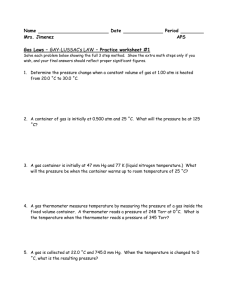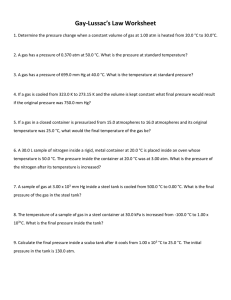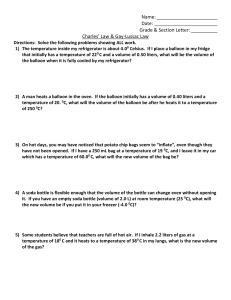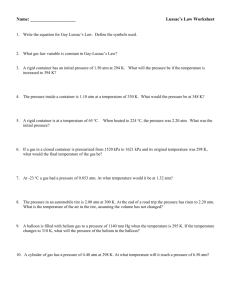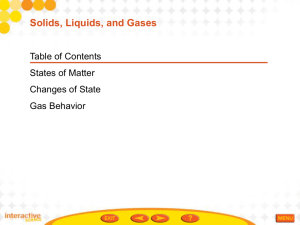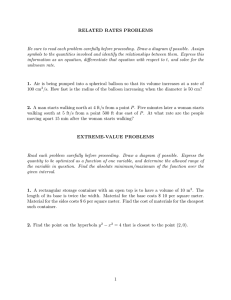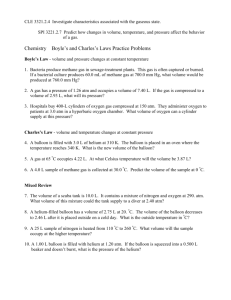States of Matter & Gas Laws Study Guide - Chemistry
advertisement
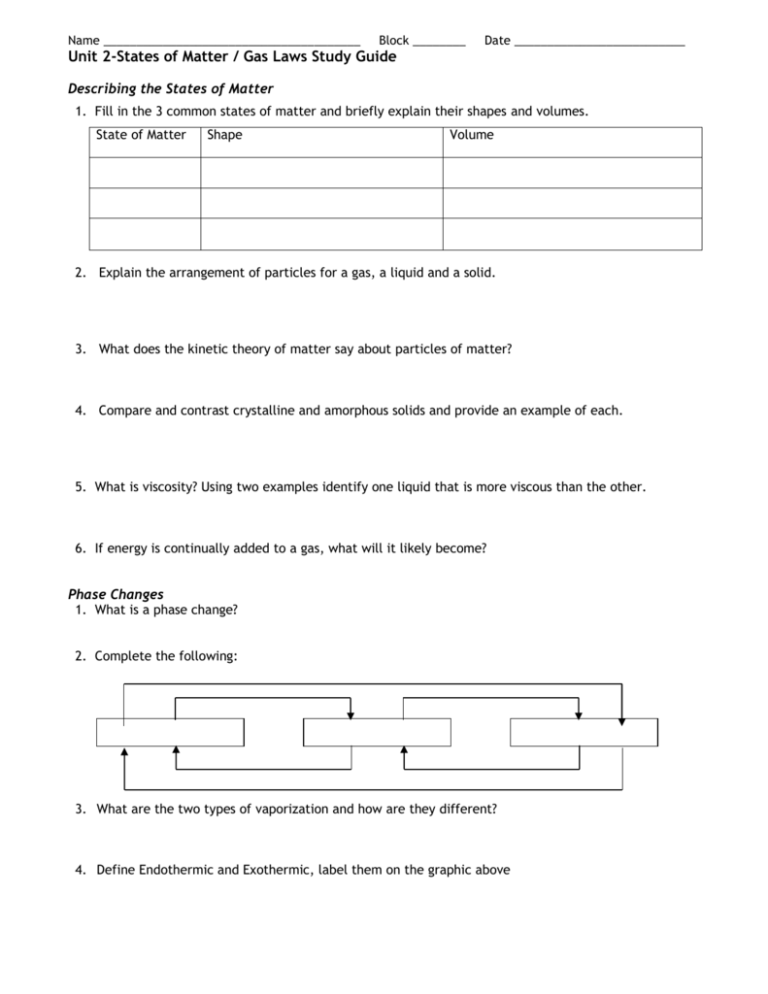
Name _______________________________________ Block ________ Date __________________________ Unit 2-States of Matter / Gas Laws Study Guide Describing the States of Matter 1. Fill in the 3 common states of matter and briefly explain their shapes and volumes. State of Matter Shape Volume 2. Explain the arrangement of particles for a gas, a liquid and a solid. 3. What does the kinetic theory of matter say about particles of matter? 4. Compare and contrast crystalline and amorphous solids and provide an example of each. 5. What is viscosity? Using two examples identify one liquid that is more viscous than the other. 6. If energy is continually added to a gas, what will it likely become? Phase Changes 1. What is a phase change? 2. Complete the following: 3. What are the two types of vaporization and how are they different? 4. Define Endothermic and Exothermic, label them on the graphic above Heating Curve Heating Curve for Unknown Substance 240 F Temperature °C 220 200 180 160 D 140 120 100 80 B 60 C 40 20 0 A Energy 1) Between which points is this substance a: Solid__________ Liquid ___________ Gas__________ 2) Between which points does the following occur? BoilingFreezingMelting CondensationEndothermic changesExothermic changes3) What happens to temperature during a phase change? 4) What temperature is the melting point of this substance? 5) What temperature is the boiling point of this substance? 4) Between what temperatures does this exist as a liquid only? 5) 34oC is equal to ____________K. 6) –128oC is equal to ____________K. E Pressure 1. What is the formula for pressure? 2. What is the SI unit for pressure and how is it abbreviated? 3. What causes the pressure in a closed container of gas? 4. Name the factors that affect the pressure of an enclosed gas. a. b. c. 5. Explain what happens to the pressure in a closed container when the temperature is increased. 6. Explain what happens to the pressure in a closed container when the volume is increased. Solve the following and state which law is represented. 7. Explain what happens to the pressure in a closed container when the number of particles in the container is increased. 8. A gas has a pressure of 1.26 atm and occupies a volume of 7.40 L. If the gas is compressed to a volume of 2.93 L, what will its pressure? 9. The volume of a scuba tank is 10.0 L. It contains a mixture of nitrogen and oxygen at 290 atm. What volume of this mixture could the tank supply to a diver at 2.40 atm? 10. A helium-filled balloon has a volume of 2.75 L at 20°C The volume of the balloon decreases to 2.46 L after it is placed outside on a cold day. What is the outside temperature in°C? 11. A 25 L sample of nitrogen is heated from 110 °C to 260 °C. What volume will the sample occupy at the higher temperature? 12. A 1.00 L balloon is filled with helium at 1.20 atm. If the balloon is squeezed into a 0.5 L beaker and doesn’t burst, what is the pressure of the helium?
